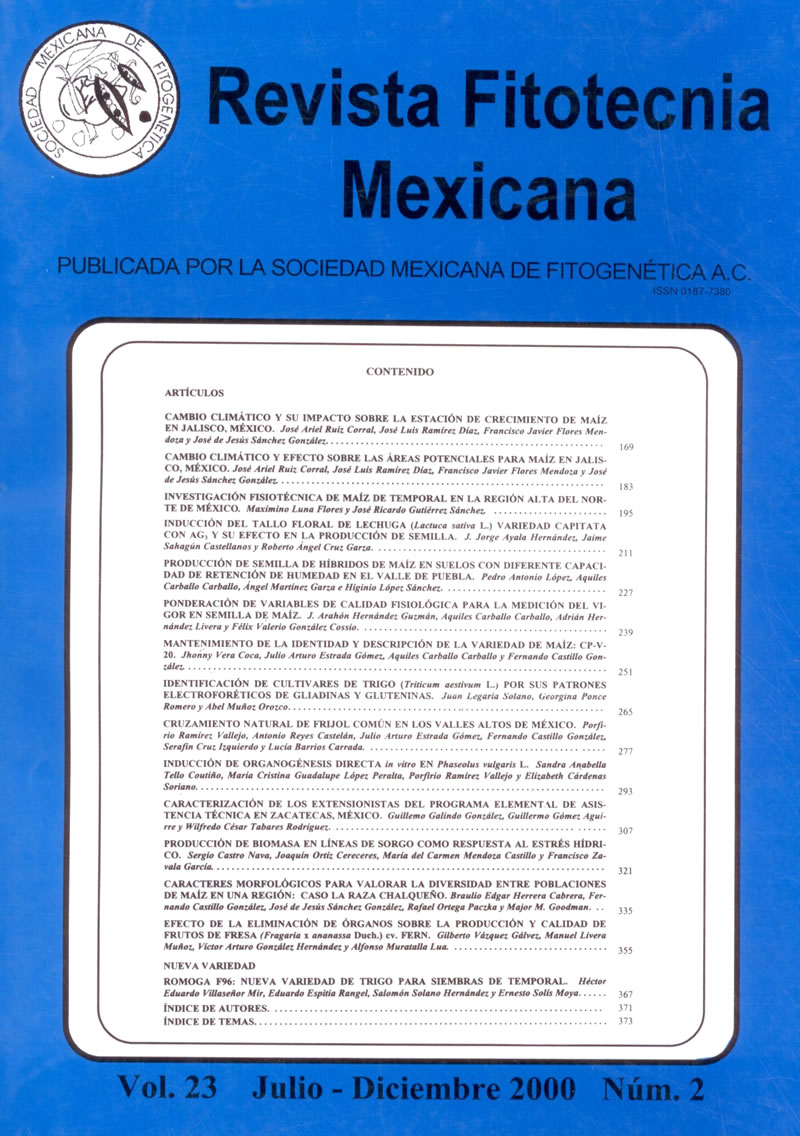BIOMASS PRODUCTION IN SORGHUM LINES IN RESPONSE TO DROUGHT STRESS
Main Article Content
Abstract
Twenty nine sorghum genotypes were characterized with respect to drought stress responses using biomass production and grain yield as basis criteria, as well as their relationship between their response to drought and physiological traits. The study was carried on at Cd. Victoria Tam. under well watered and drought stress condition during 1996. The genotypes were subjected to drought stress from panicle initiation until the soil reached the permanent wilting point (PWP). Data were recorded at the beginning and the end of drought and at harvest. During the drought period it was a delay in shoot growth and an increase in root growth, however there were not differences in total biomass production between soil moisture conditions, due probably to compensation effects. The root biomass represented 44 % of the total biomass under stress. Furthermore, there was an association between high biomass accumulation during the drought recovery period and high grain yield. The high grain yield obtained under water stress in resistant genotypes was associated with greater panicle length, days to flower more, and a greater active leaf area during the recovery period. It is considered that drought resistance in the sorghum genotypes studied, was due to their biomass production capacity during drought stress and recovery periods, but not to changes in the water condition of the plant, as well as to ability to maintain a high grain yield and harvest index under stress conditions. Biomass production and grain yield in response to water strees may be useful criteria in sorghum breeding programs for drought resistance. According to the selection criteria utilized, 10 genotypes were classified as resistant, nine as intermediate and 10 as susceptible, of those, two resistant genotypes UAT 124 and UAT 152 and one susceptible UAT 30 were selected for further studies.

